

The following is intended to give an up to date summary of the records of clearwing moth species (Sesiidae) in Bedfordshire and encourage survey work to look for them at new sites. It is a "work in progress" and is being updated as new records are accepted. The maps currently show records for up to the end of 2020.
Eleven species in this family have been recorded so far in the county. In the past, records were usually of emergence holes or other evidence of larvae with the occasional chance encounter with an adult moth. More recently, pheromone lures have become easily available and this has encouraged recording of these species as some will respond very quickly if present. This method does not work for all species but it does for all current Bedfordshire species. Lures are available from several commercial suppliers, who may also supply details of how to prepare, store and use them in the field. The county macro-moth recorders use Anglian Lepidopterist Supplies and have been very happy with the quality of lures and the accompanying instructions including what time of day gives the best response for each species etc.
An example of the use of a lure is shown below. In this case the
lure is for Six-belted Clearwing and it has been tied up in a square of netting
and hung on a string from a clothes-peg, which in turn has been clipped onto a
stick put in the ground. Two moths can be seen attracted to the lure. It is
very important that lures are not left out for extended periods of time just to
get a species on a garden or site list. 30 minutes is quite long enough or you
will be dragging male moths away from their normal areas
Photo by A Banthorpe
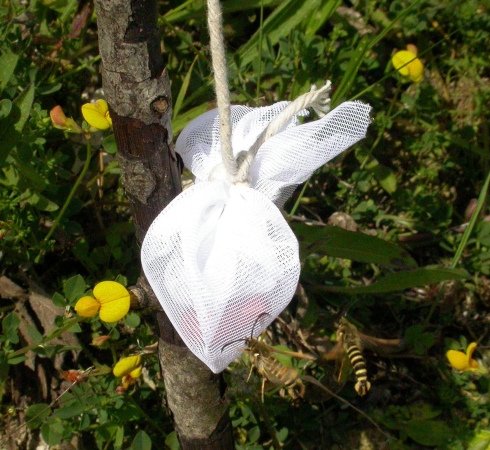
Most of the text below is repeated from The Butterflies and Moths of Bedfordshire (Arnold et al, BNHS, 1997) which is no longer in print and difficult to obtain. The text has been updated to include records from 1997 to date, and in addition the known Bedfordshire distribution of each species is mapped at tetrad (2km x 2km) level.
Please note that all photographs are displayed with the permission of the owners and should not be used for any other purpose without their permission.
In the text, VCH refers to The Victoria History of the County of Bedford published in 1904.
The key for the maps is as follows:-
Green = seen between VCH and 1959
Blue = seen between 1960 and 1996
Red = seen post 1997 (red dots are smaller to show if there was a previous
record in that tetrad)
Records that are only identified to a 10km square are not mapped
here.
Raspberry Clearwing Pennisetia hylaeiformis (Laspeyres) (52.001 [BF369a])
1997 to 2010:
This species was described as new to Britain by Jim Reid in 2008 (The
Entomologist's Record and Journal of Variation, Vol 120 part 5, Sep/Oct 2008).
Jim found the adult moth in Cambridgeshire and Hertfordshire close to the Cambs
/ Herts border in the summer of 2008 having first found feeding signs on
Raspberry canes in his garden in October 2007. On 29th March 2009 Charles Baker
found similar signs in his garden Raspberry canes in Studham and also an
actively feeding larva. This cane was potted up and sleeved and the adult moth
emerged on 18th July 2009. Meanwhile Alan Outen put out a HYL pheromone lure on
his garden fruit case on the afternoon of 14th July 2009 and attracted a single
adult male and another was attracted nearby on 25th by another recorder. These form the first VC30 records.
It was subsequently recorded to lure at the Whipsnade end of Dunstable Downs on
8th August by Charles Baker with Charles also finding four in his Studham garden
on 16th. In 2010 the sole record was of five to lure in a Biggleswade garden on
28th July by Richard Revels.
2011 to 2020:2011 (4 sites), 2012 (2 sites), 2016 (1 site), 2018 (4
sites), 2019 (1 site), 2020 (2 sites).
Flight:
mid-July to mid-August. Flies during the day.
Larval Foodplants:
Raspberry, feeding in the lower stems and
causing a gall just above the roots at the stem base.
Male Raspberry Clearwing by M G Banthorpe and gall on a
Raspberry cane by C Baker
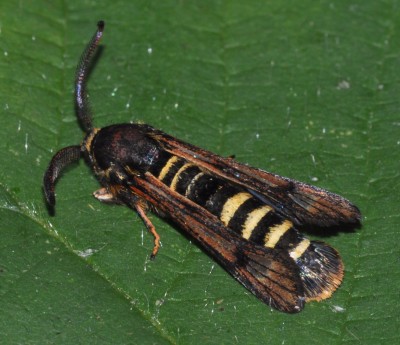
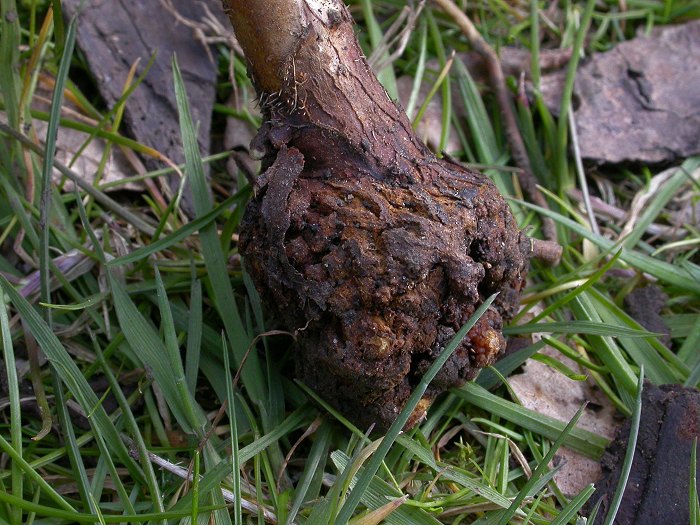
Raspberry cane showing feeding frass and cut cane showing the
head of the larva. It was this larva that emerged as the adult in Charles'
garden. Photos by C Baker
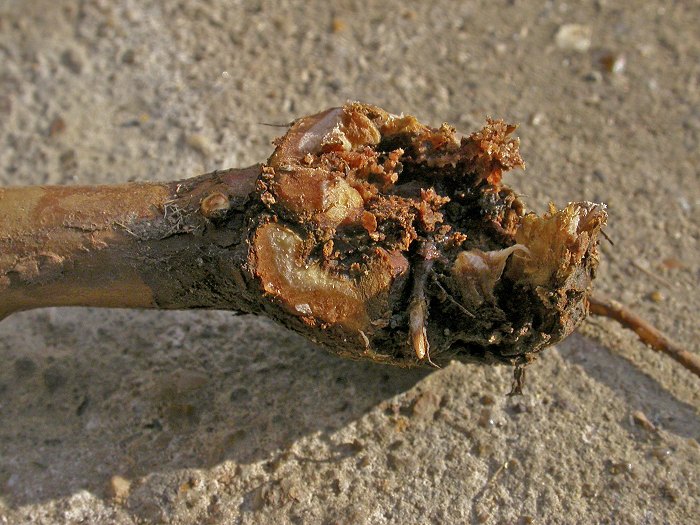
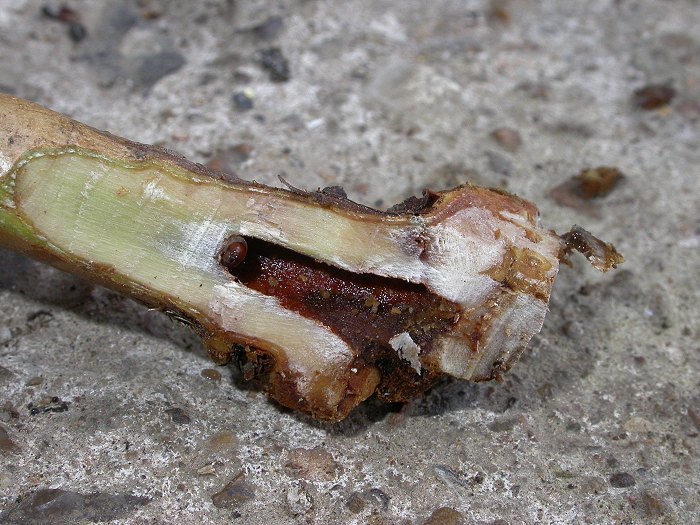
Distribution map
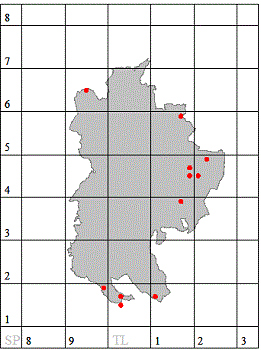
Hornet Moth Sesia apiformis (Clerk) (52.002 [BF370])
Pre VCH:
Emily Shore (Anon, 1891) noted seeing
Sphinx apiformis on 16 May 1835, presumably near Everton, but we cannot be
sure whether she really meant Hornet Moth or was using the name loosely for one
of the Bee Hawk-moths.
VCH:
“Bedford, Woburn; on Poplars.”
VCH to 1996:
R.M.Craske recalled that this species was
common in the Bedford area between 1918 and 1927. A specimen in B.B.West’s
collection is labelled “Bedford 1st July 1924. W.G.Nash”. Specimens
in the Kershaw collection are labelled “Bedfordshire July 1924 and July 1930
W.G.Nash”. More recently this species has been recorded from: Bedford area
(1959, 1960, 1979, 1984), Biggleswade (1989), Blunham (1983), Brogborough
(1984), Clapham (1964), Felmersham NR (1984), Langford (1972), Salford (1996),
Sandy (1981) and Tempsford (1994). The Hornet Moth is almost certainly
under-recorded in the county.
1997 to 2010:
In the past this species did not respond to pheromone lures and hence recent
records have all been from emergence holes and occasional records of adults.
However, a new lure is now available for the 2008 season and will be tested in
the county.
Adult moths have been
reported from Bedford (2001 & 2002), Clifton (2010), East Hyde STW (2010), Eaton Ford (2009), near Lower Gravenhurst (2007), Luton (2004
& 2006), Marston Vale CP (2007 & 2008), Pegnut Wood (2009), Stanford
Wood (2009) and Turvey (2004).
Emergence holes were found at Barton-le-Clay (2008), Bromham (2009),
Chicksands Wood (2010), Colworth (2004), Harrold-Odell
CP (2005 &2007), Marston Vale CP (2006 & 2007), Maulden Wood (2010), New Road Maulden (2008), Priory CP (2008), Riseley
(2000), Shillington (2009), Tempsford (2008), Turvey (2000), Willington (2005), near Wooton (2008).
2011 to 2020: multiple records of both emergence holes and latterly more
of adults as pheromone lures used.
Flight:
June and July. Flies during the day.
Larval Foodplants:
Black Poplar* and sometimes other species of
poplar, feeding in the lower trunk and roots.
Female Hornet Moth by A Banthorpe
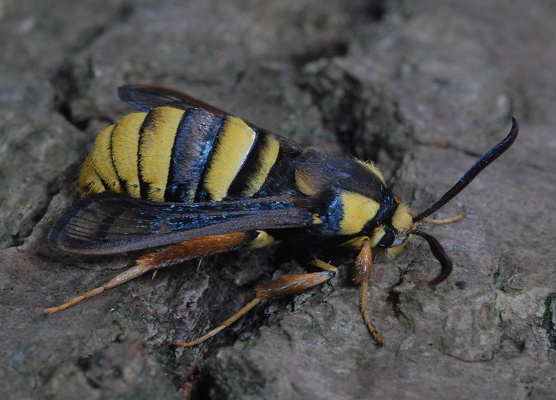
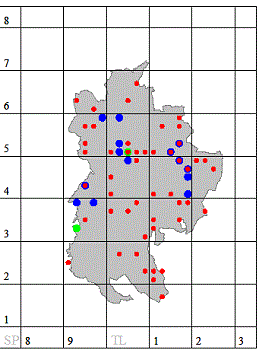
Emergence Holes by M G Banthorpe and a pupal exuvia
of Hornet Moth by A Banthorpe
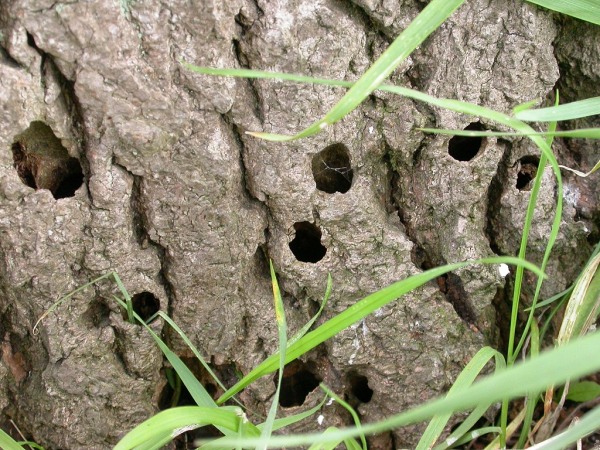
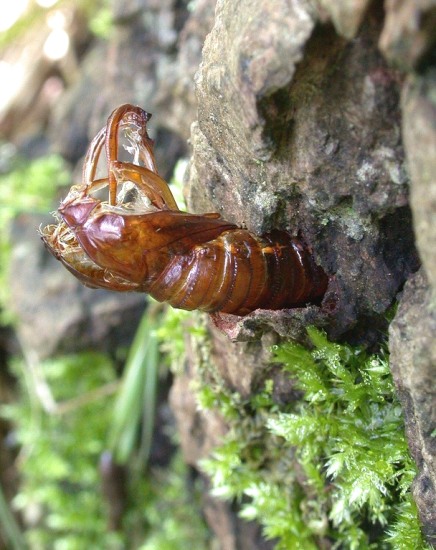
Mating pair of
Hornet Moths by A Banthorpe
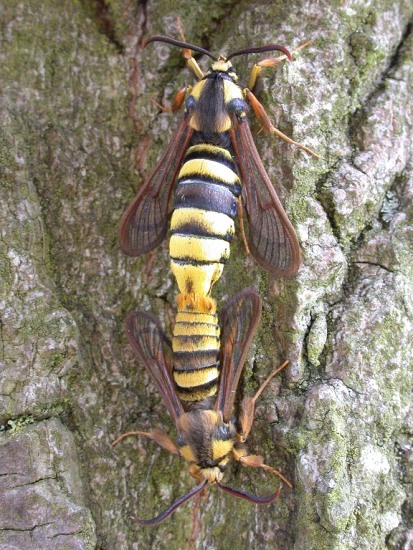
Lunar Hornet Moth Sesia bembeciformis (Hübner) (52.003 [BF371])
VCH:
“Bedford”
VCH to 1996:
There are specimens in the Rylands collection
from Kempston in 1911. Collected in 1983 as larvae from East Hyde and bred by
K.F.Webb. The following records are all for exit holes in the base
of sallow bushes: Apsley Guise (1992), Henlow, Sewell and Maulden Wood (1984);
Luton Hoo, Bison Hill and King’s Wood, Heath and Reach (1985); Pegsdon
(1991-1992). Another under-recorded species.
1997 to 2010:
This species does not respond to pheromone lures and hence
all recent records have been from emergence holes or larval workings found in sallows.
These records are from Carlton (2004), Felmersham LNR (1998 &
2006), Harrold-Odell CP (2000), Keysoe (2000), Odell (1998 to 2001 & 2006),
Podington (2000), Priory CP (2008), Riseley (2000), Sandhouse Lane NR (2001),
West Wood (2006), Yelden (2000) and Yelnow (2006).
2011 to 2020: This is still a scarcely recorded moth in vc30. Larval
workings were recorded in two sites in 2011 and larvae in 2014 with adults in
2016 and 2018. In 2020 however, a modified pheromone lure was trialled in the UK
resulting in two records of adults at new sites. We hope more will follow in
2021.
Flight:
July to August. Flies during the day but the
adults are rarely seen.
Larval Foodplant:
Sallow*, feeding in the roots and trunks.
Male Lunar Hornet Moth by S Farrell
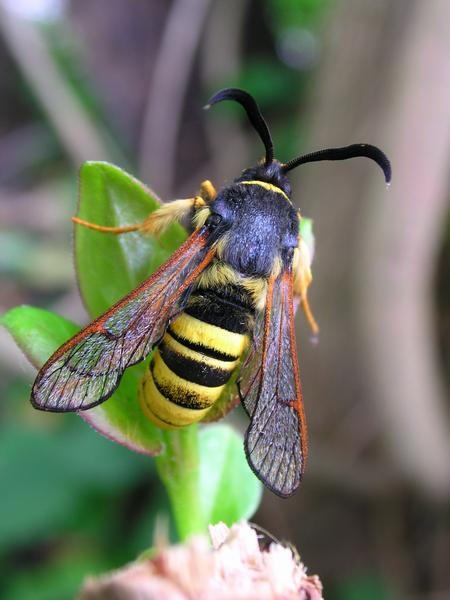
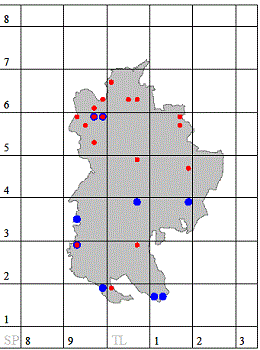
Lunar Hornet Moth larval workings by
M G Banthorpe
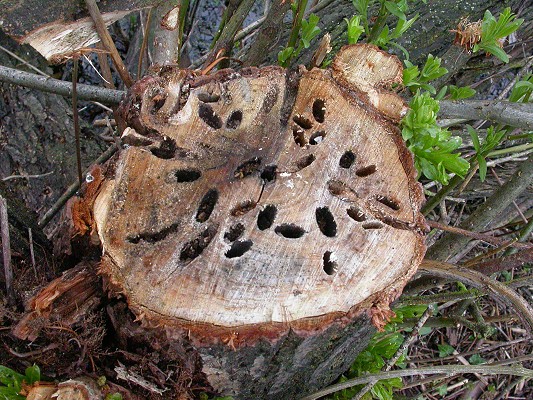
Large Red-belted Clearwing Synanthedon culiciformis (Linnaeus) (52.007 [BF381])
VCH to 1996:
A very scarce species in Bedfordshire. A specimen was found in Rowney Warren in
May 1956 by V.H.Chambers. There are many areas in Bedfordshire where the
foodplants of the Large Red-belted Clearwing are common so it may well have been
overlooked though the moth does seem to be in decline nationally and has been
searched for with lures in Bedfordshire in 2009 and 2010 with no responses.
1997 to 2010:
No records.
2011 to 2020: No records. A report of this species to the CUL lure (the
one for this species) at The Lodge (RSPB Sandy) at the end of May 2011 was not
supported by photographs or a specimen so could not be accepted. Repeated trying
at this site with this lure then and in subsequent years only attracted
Red-belted Clearwing. Care must be taken with claiming this species as the two
are very similar - a set of good photographs including front on views showing
the palps and preferably a specimen will be the minimum requirement for
acceptance.
Flight:
May* and June. Flies during the day.
Larval Foodplants:
Birches and possibly alder, feeding under the
bark.
Large Red-belted Clearwing by S Nash
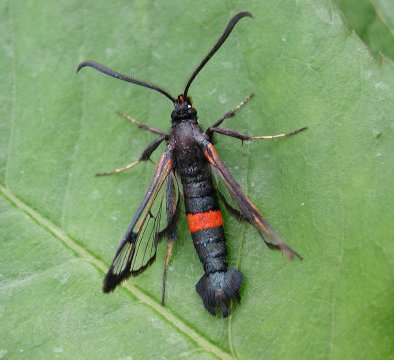
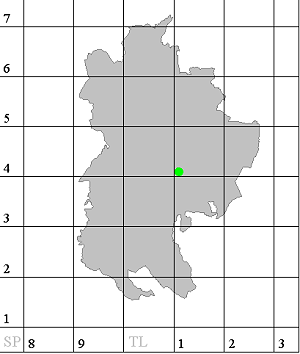
Red-tipped Clearwing Synanthedon formicaeformis (Esper) (52.008 [BF380])
VCH to 1996:
There is a label in the Rylands collection
with the entry “Kempston” but no date. As with the previous species, there is a
specimen in the Kershaw collection labelled “Woburn Sands 1933, G.Hawes”. Again
no exact location is given, so we do not know on which side of the county
boundary it was found. S.Cham found a single specimen resting on foliage on the
bank of the River Ouse, north of Great Barford on 14 July 1989. W.J.Champkin
found another specimen on a sallow bush by the Ouse in Bedford in July 1995.
1997 to 2010:
A single individual was found by the Finger Lakes at Priory CP, Bedford, in
1997. There were no more records until 2004 when one was found at Deepdale
Sandpit, Potton, and the species responded to pheromone lures at Biggleswade
Common and Flitwick Moor. In 2006 one was found whilst sweeping for hoverflies
at Flitton Moor. In 2009 better success was had with adults to lure at the River
Ivel navigation near Clifton, Lower Alders NR near Shefford, Old Moat NR at
Arlesey, Biggleswade Common, Harrold-Odell CP (2 sites), Felmersham NR and
Bromham Lake LNR. In 2010 one was found at Great Barford, one nectaring on
Knapweed at Chicksands wood and one nectaring on a thistle in Wilstead Wood.
Responses to pheromone lures came from Eaton Ford and Langford Mill.
2011 to 2020: As many records in this period as in the previous 21 years
- 2011 (3 sites), 2014 (2 sites) (2017 (1 site), 2018 (3 sites), 2019 (2 sites),
2020 (1 site).
Flight:
June, July (week 28)*. Flies during the day.
Larval Foodplants:
Osier and other species of willow and sallow,
feeding in the stems.
Red-tipped Clearwing by P Harris
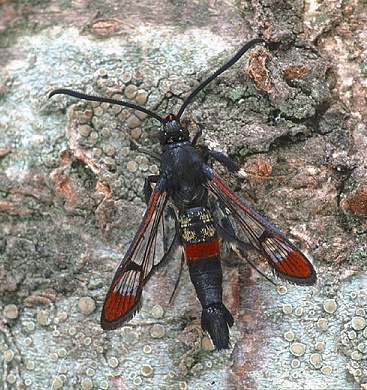
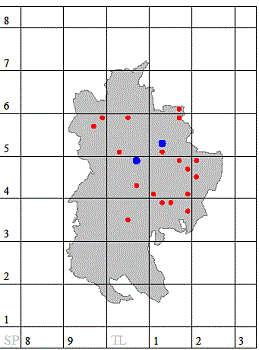
Sallow Clearwing Synanthedon flaviventris (Staudinger) (52.009 [BF377])
VCH to 1996:
No records
1997 to 2010:
No records.
2011 to 2020: Distribution maps suggested that this species was not
likely to occur in the East Anglian region, being a more southerly species.
However, someone tried out a pheromone lure in the neighbouring county of
Northamptonshire (VC32) in July 2020, just on the off chance, and found the
species to be present. This spurred on Richard Bashford, to procure a lure and
try it out in suitable habitat. On 22nd July, eight males came to the lure at
Begwary Brook NR, near Wyboston. The species has a two year life cycle and is
thought to mainly fly in even years.
Flight:
July*. Flies during the day.Sallow Clearwing by Andy Banthorpe
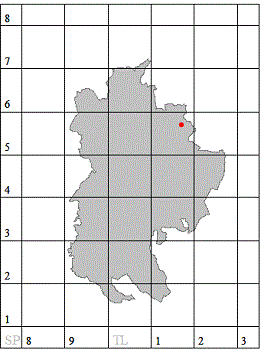
Orange-tailed Clearwing Synanthedon andrenaeformis (Laspeyres) (= anthraciniformis (Esper)) (52.010 [BF378])
VCH to 1996:
Anon (1907) mentions Aegeria andreniformis bred from Bedfordshire
specimens. R.Palmer “took a number of larvae in stems of Viburnum at Tingley
Plantation” on 15 April 1943. Reared by S.H.Kershaw from Barton in
1945. More recently collected from stems of Wayfaring-tree on Markham Hills by
K.F.Webb. The adults emerged during June and July 1984. See also
the section on Yellow-legged Clearwing for the record by Chambers.
1997 to 2010:
The recent records of this species are a mix
of exit holes and adults. Exit holes were found at Melchbourne, Odell and West
Wood in 2000. A single adult was found in a Luton garden in 1998, adults
responded to lures at Barton Hills NR (2010), Blunham (2010), Clifton ( site 1
2008,2009 &2010 site 2 2009), Cockayne Hatley (2009 & 2010), Marston Vale CP (2009),
Shillington (2010), Sundon Hills CP (2002) and Warden Street (2010).
2011 to 2020: Recorded much more widely in the county and this species seems to
be distributed quite widely - 2011 (1 site), 2014 (1 site), 2015 (1 site), 2018
(11 sites), 2019 (3 sites), 202 (3 sites)
Flight:
May, June*, July*. Flies during the day.
Larval Foodplants:
Wayfaring-tree* and Guelder-rose, feeding in the stems.
Orange-tailed Clearwing by
A Outen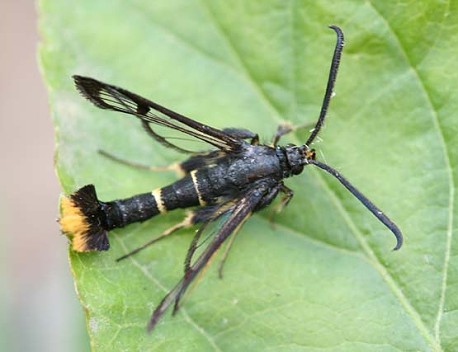
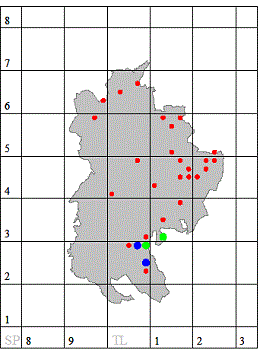
Red-belted Clearwing Synanthedon myopaeformis (Borkhausen) (52.011 [BF379])
VCH:
“Taken by Mr. W.Bond-Smith at Potton.”
VCH to 1996:
A scarce species in Bedfordshire. A specimen
in the Kershaw collection is labelled “Woburn Sands 1933, G.Hawes”. As no exact
location is given, this could have been found just over the county boundary in
Buckinghamshire. Kershaw found it in apple branches at Aspley Heath in 1935. The
only recent records are from Bedford (1960, 1961, 1977, 1978 and 1983) and
Shillington (1996). Mostly found in gardens and orchards.
1997 to 2010:
This species comes readily to a pheromone lure
if present. In fact, sometimes it can respond within ten seconds of hanging the
lure up. Beware as this species has been found responding to the lure for
Large Red-belted clearwing and the two are very similar.
Adults were found without using lures
in gardens in Arlesey (2009), Bedford (2003 & 2008) and Luton (2002), and the species responded to lures
at Arlesey - Glebe Meadow NR (2010), Bedford (2010), Biggleswade Common (2010),
Biggleswade garden (2010), Biggleswade Stratton Pk Balancing lake (2010),
Blunham (2010), Bromham (2010), Carlton (2005), Chicksands Wood (2010), Clifton (2009
& 2010), Cockayne Hatley (2009), Eaton Ford (2010 at 2 sites), Eaton Socon (2009),
Honeydon Road (2010), Lower Stondon (2009), Maulden - Duck End NR (2010),
Moggerhanger (2010), Potton (2002), Sharnbrook (2004), Southill (2010), Staploe
(2010), Studham (2005) and Yelden (2005).
2011 to 2020: Many more records showing how widespread a species this is
- 2011 (4 sites), 2012 (2 sites), 2014 3 sites), 2015 (2 sites), 2016 (2 sites),
2017 (2 sites), 2018 (6 sites), 2019 (3 sites) 2020 (1 site).
Flight:
June* and July. Flies during the day.
Larval Foodplants:
Apple*, pear and other fruit trees, feeding under the bark.
Red-belted Clearwing by A Banthorpe
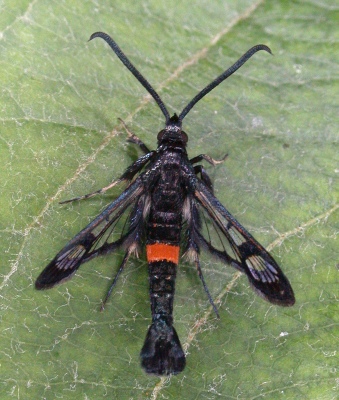
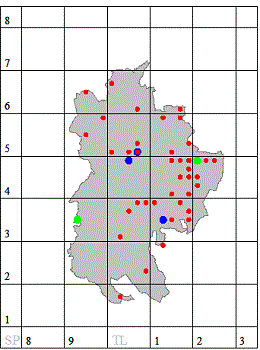
Yellow-legged Clearwing Synanthedon vespiformis (Linnaeus) (52.012 [BF374])
Pre VCH:
Found by J.C.Dale in Clapham Park Wood on 31 May, 1 and 2 June 1820 “Under ye
bark of Oak Stump” (Dale, under the name Sesia Ostriformis). There are four
specimens in the Dale collection side-labelled “Bedford” which may date from
this occasion.
VCH:
(as Sesia cynipiformis Esp.) “Recorded by Westwood in Clapham Park
Woods.”
VCH to 1996:
A scarce species in Bedfordshire. Found at Apsley Heath (1971), Maulden Wood
(1974 and 1977), Potton Wood (1977) and Sewell (1978). Chambers found Yellow-legged Clearwing in Forty Foot Lane on 28 June 1947. However, he used the
Latin name Aegeria andreniformis which refers to Orange-tailed
Clearwing. What the specimen was will never be known for certain.
1997 to 2010:
All five recent records were to pheromone lures at The Lodge, RSPB Sandy,
(2002, 2009 & 2010),
King’s Wood, Heath & Reach, (2004), Maulden Wood (2009) and a Clifton garden (2008).
2011 to 2020: More records - most to pheromone lure and mostly in the
area of and around RSPB Sandy (probably reflecting the location of people with
lures available in the daytime) - 2011 (2 sites), 2014 (1 site), 2017 (1 site),
2018 (2 sites), 2019 (2 sites), 2020 (2 sites)
Flight:
May to August. Flies during the day
Larval Foodplants:
Oaks*, elms, cherry, birches and sometimes Sweet Chestnut, feeding under the
bark.
Yellow-legged Clearwing by C Baker
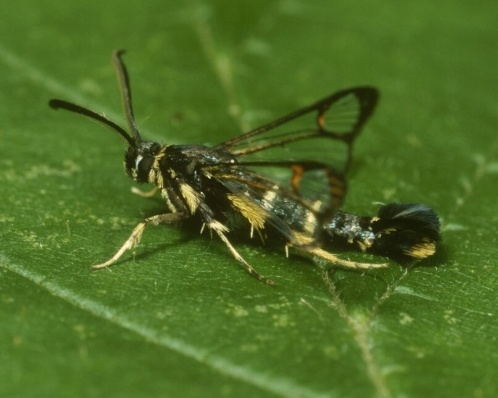
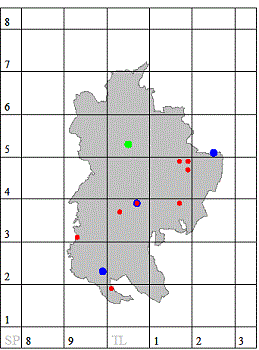
Currant Clearwing Synanthedon tipuliformis (Clerk) (52.013 [BF373])
VCH:
“Generally common about currant bushes.”
VCH to 1996:
A moth that is rarely seen in the county.
Found at Aspley Guise (1992), Aspley Heath (1938), Bedford (1960, 1971, 1984,
1987, 1990-96), Biggleswade (1982) and Clifton (1990). This is another species that is probably
overlooked and may be more common than is indicated by the records.
1997 to 2010:
The numbers of the foodplants grown in gardens etc have declined in the last 30
to 40 years, so this moth seems to have become even scarcer than it was
before.There are now a few more recent record as lures are used to find the
adult males: Bedford (2007), Biggleswade (site 1 2006 & 2010, site 2 2010), Clifton (2007
& 2010), Sandy (2009) & Studham (2010)
2011 to 2020: This species continues to be scarce, maybe as currant
bushes are not planted so often as they were. further records as follows - 2011
(2 sites), 2014 (1 site), 2016 (1 site), 2017 (1 site), 2018 (3 sites), 2019 (1
site), 2020 (1 site).
Flight:
June and July (weeks 24 to 26)*. Flies during
the day.
Larval Foodplants:
Black currant*, Red currant* and gooseberry,
feeding inside the stems.
Currant Clearwing by S Farrell
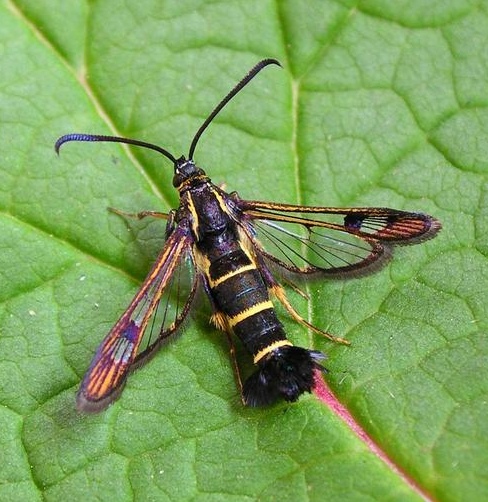
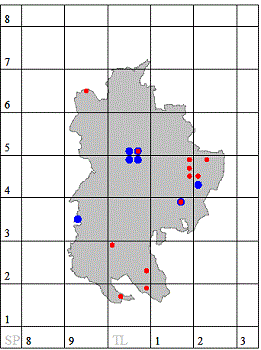
Six-belted Clearwing Bembecia scopigera (Scopoli) (52.014 [BF382])
VCH to 1996:
Found by searching or sweeping its
foodplants and adjacent areas. Recorded from Sewell (1978 and 1984), Sharnbrook
Summit (1965), Stanbridgeford (1982) and Sundon Hills Country Park (1990).
1997 to 2010:
This species, like Red-belted Clearwing,
responds well to pheromone lures and so is relatively easy to record at a site
if it is present. The lure needs to be hung low to the ground amongst the
flowers of the foodplants. Recent records, mostly to lures, have come from
Arlesey (2008), Barton Hills NR(2001 & 2010), Biggleswade - Stratton Pk
balancing lake (2010), Bromham Lake LNR (2009), Clifton (2010), Langford (2010), Marston Vale CP (2002, 2004 & 2005), Priory CP (2005),
Sewell Cutting (2005), Sharnbrook Summit (2001), Sharpenhoe Clappers (2001 &
2010), Stotfold (2008), Totternhoe Knolls (2007),
Totternhoe Qry (2001 & 2007), Upper Sundon Qry (1998 to 2007) and Warden Hill
(1998).
2011 to 2020: This species can be quite abundant where it occurs and in
addition to recording by pheromone lure it can be swept from the food plant.
Further records in this period - 2011 (2 sites), 2012 (2 sites), 2013 (1 site),
2014 (2 sites), 2015 (2 sites), 2016 (1 site), 2017 (3 sites), 2018 (4 sites),
2020 (3 sites).
Flight:
June, July (week 27)*, August. Flies during
the day.
Larval Foodplants:
Bird’s-foot-trefoils and Kidney Vetch, feeding
in the roots.
Six-belted Clearwing by A Banthorpe
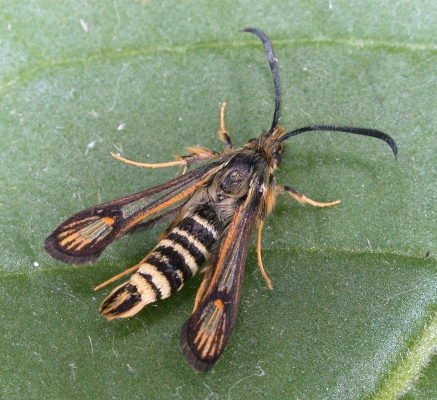
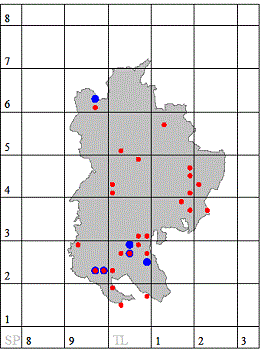
Last updated 2nd May 2021